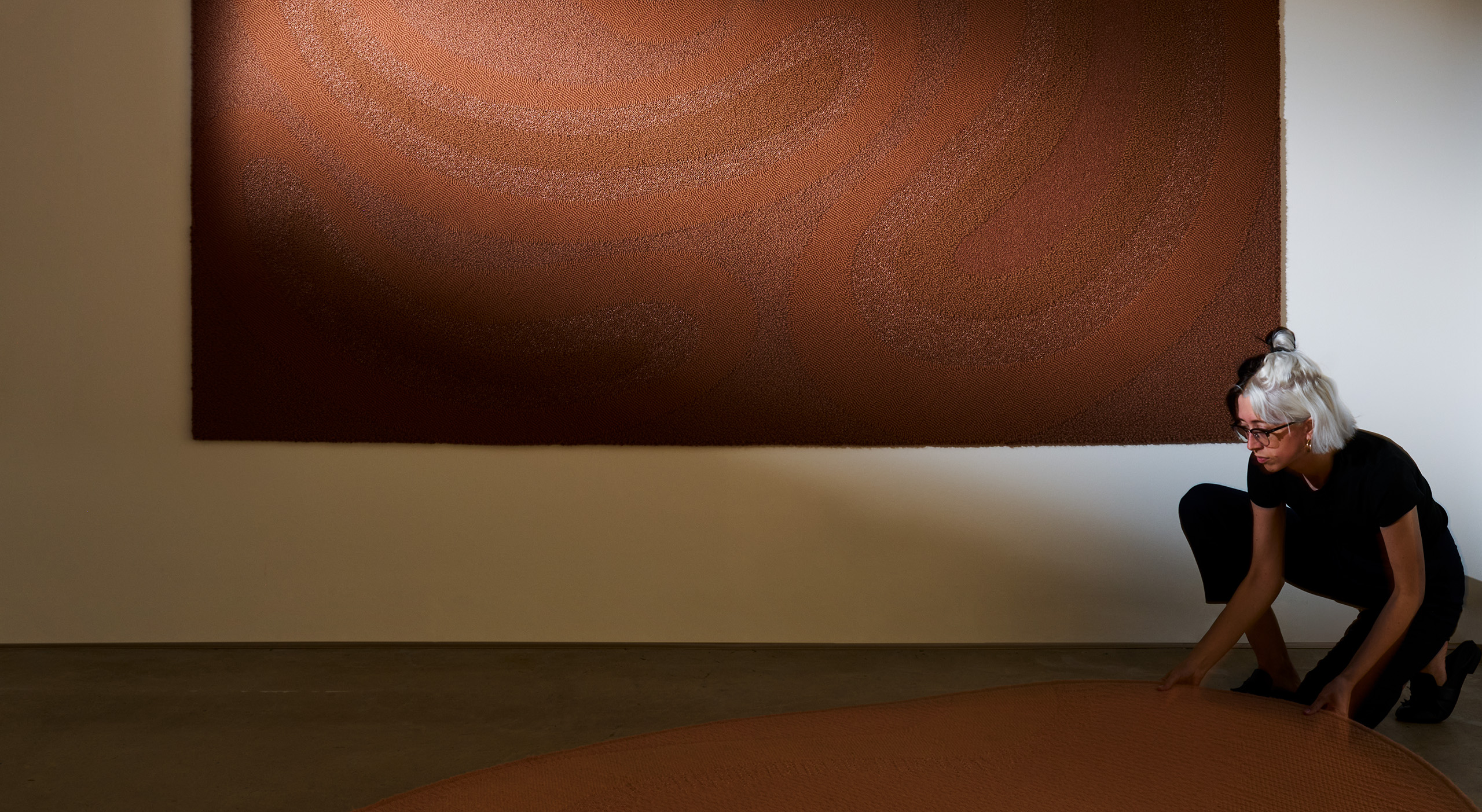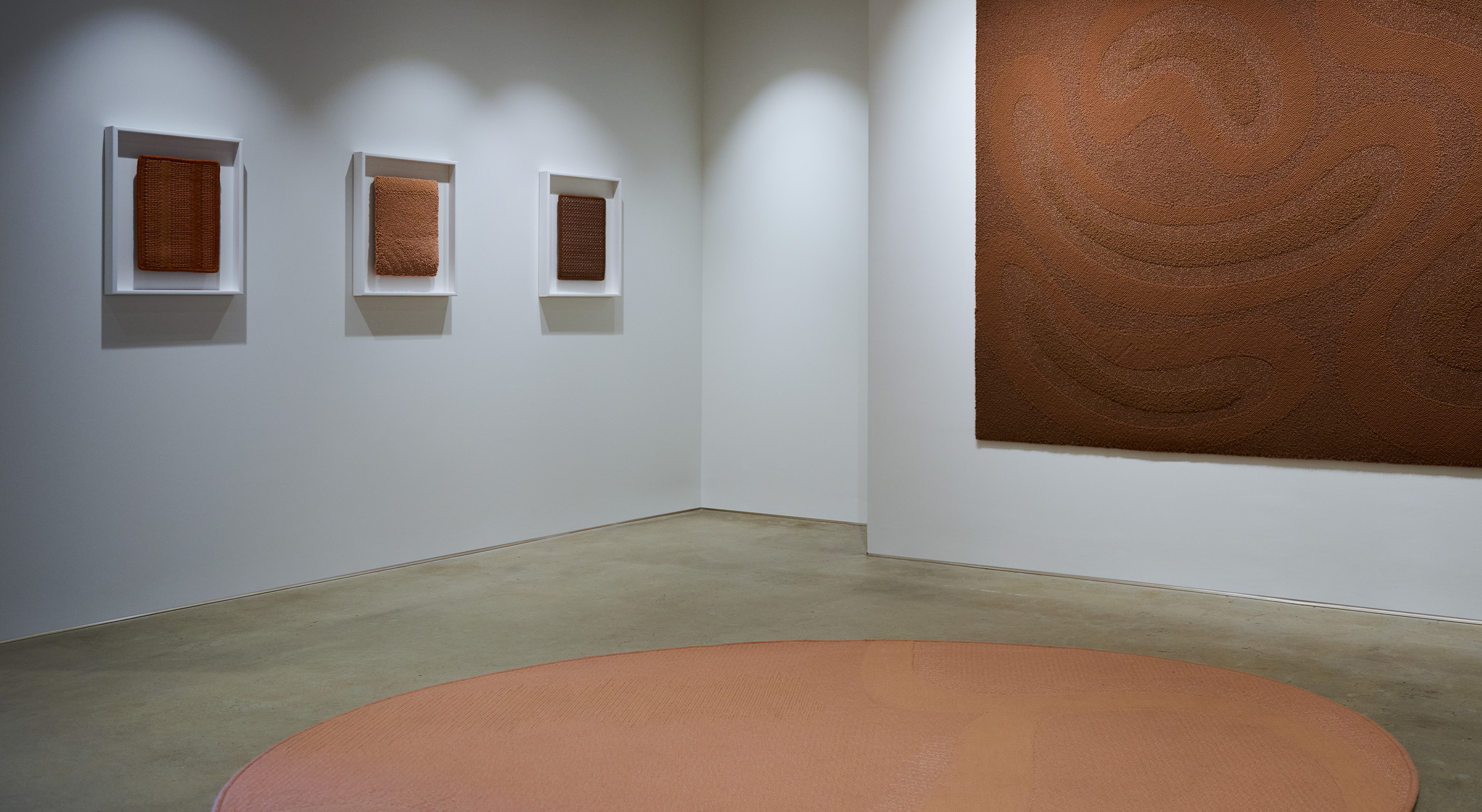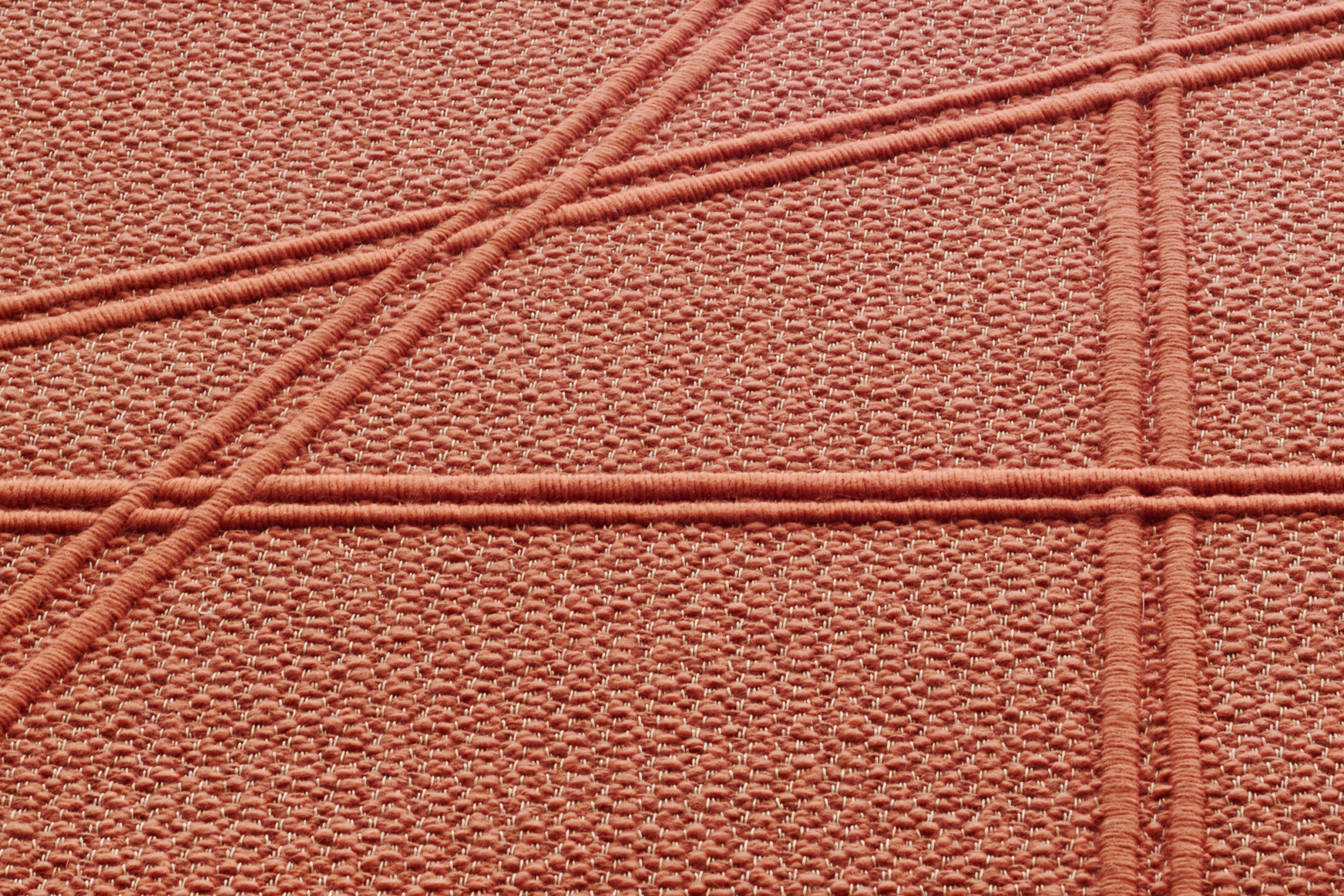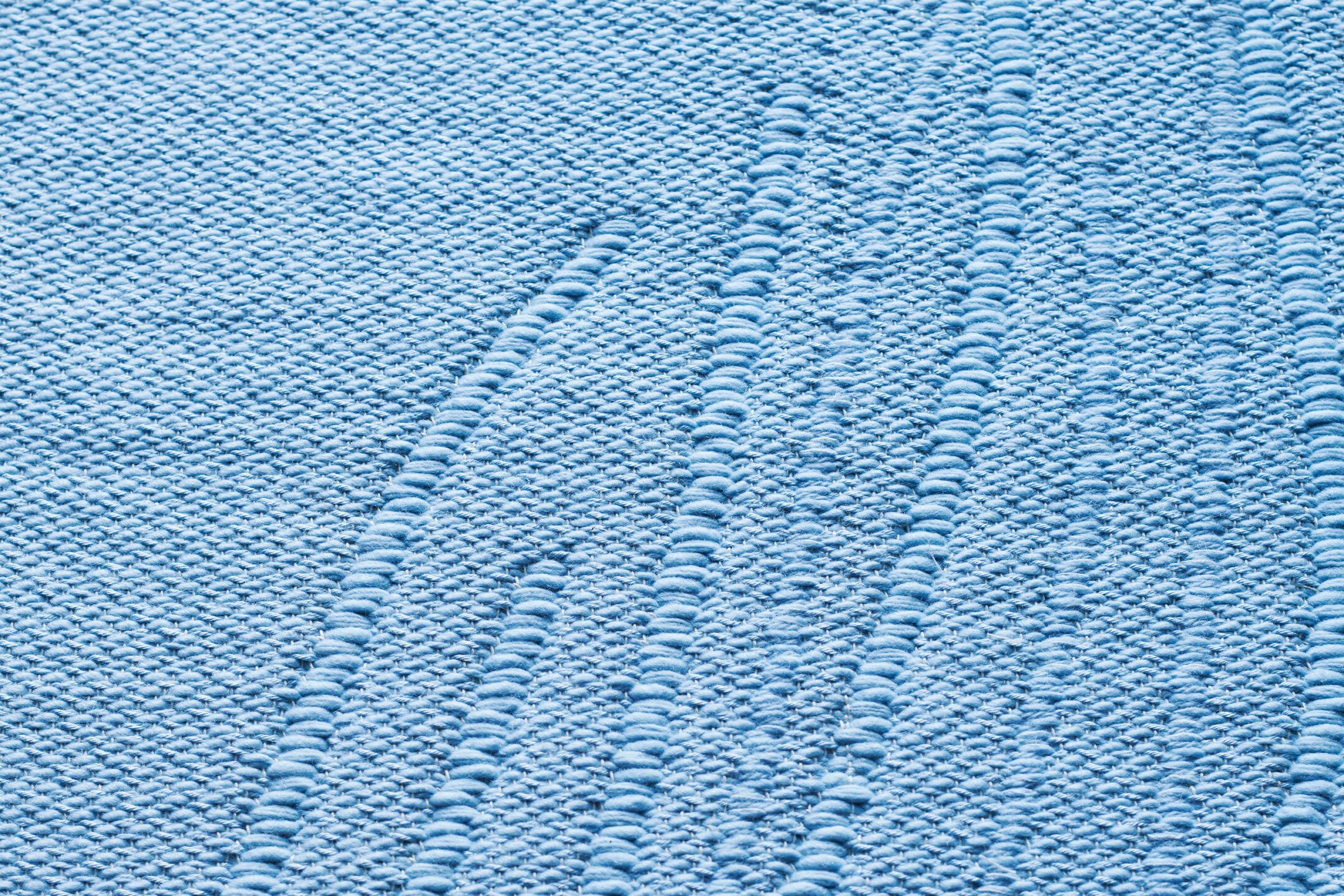Uncovering Erosions
As Erosions opens as the inaugural show of the Boston Gallery, Brand Manager and curator Sarah Barkowski sat down to discuss her curation of the show, the significance of its theme, and her personal ties to the exhibition.
What is the concept behind the exhibition and why did you choose it? How was the layout informed by the theme?
The concept of the exhibition is centered around this idea of deterioration and decay… not in the way of destruction and loss, but in a way of transformation. I’ve always been very interested in the beauty of nature’s cycles—the earth’s moisture condensing in the chilled morning’s dew, then evaporating into the air with the warming of the sun, only to condense later in the sky, raining back down to earth. How they go on continuing. How nothing is lost, only changed. That’s what I wanted to focus on in this show.
As fleeting as the moment of golden hour is, you know it will come again tomorrow; but somehow there is this tension. You don’t want to let go, you want it to last forever; even though you know the day has to go on living, and that you will see another sunset tomorrow, you want to hold onto it. I think there’s an awareness there in the individuality of moments… that even though you will see another golden hour tomorrow, that golden hour will not be the same as this one, because one moment can never be exactly the same as the last. I think an essential element of that beauty is knowing that it doesn’t last… as you soak up the beauty of the moment, you are already mourning it.
Both with the cycles and with this, I think of the yin and yang of Taoism: there is always something good in the bad, just as there is always something bad in the good. This exhibition is that: it’s a reflection on the cycle of deterioration. As erosion breaks down the surface of stones and mountains, it becomes sand and sedimentation, moving through this cycle and changing forms to create a basis for new life. In the earth’s cycles, nature is constantly breaking things down and transforming them into new things so that life can continue; wildfires, which are seen as destructive and detrimental, break down plant life to nourish the soil for new growth. Man tries to keep things the way they are so much that we fight against nature’s natural cycles. Concrete buildings and plastic casings. We try to immortalize things, but none of us are immortal. None of this is immortal the way that it is in this very moment. It keeps on going, but only if it keeps on changing.
The layout of the exhibition reflects this. As you enter the space, your eyes are drawn into Sand (2023) on the right wall. Its heavy motifs form large, interlocking structures like boulders tumbling together. The movement in the piece is so beautiful because even as it represents the solid forms of rock, they feel light and fluid, dancing together in a cosmic gel. It reminds me of transformation sequences in animation when a form changes from frame to frame, entering into this amorphous state at one point to come out the other side as something new.
As the forms become more fluid, Neo (2021) rests on the ground as a swirling eddy of loose sand. The variation in the lines creates an undulating movement that reminds me of the fluidity of a millipede. Situated on the floor, the piece evokes that shallow place on the shore where the water glides over in a thin layer, gently pushing and pulling the fine, mud-like sand, the sediment looking both solid and liquid simultaneously.
As your gaze moves back up, your eyes meet the rigid, stacked lines of Arrastra 309 (2019) that begin to restructure the transformation into thin layers of sedimentary rock.
As you round the room, the swatches on the front wall reflect a continuation of this: the thick, well-formed layers of Sahara 419 (2019) transition into the sand dune-like waves of Nova (2021), resting for a moment in the fertile ground of Silt (2023) before returning to Sand (2023). These framed segments invite you to look closely, each piece acting as just a fragment of the larger work.
The pieces themselves echo the timeline of these transformations. Just as these processes take years, decades, centuries to occur in nature, the pieces themselves are the result of years of meditation and development. With textile works spanning five years, and the development of them spanning almost a decade, the deep-rooted connections between the pieces and the iterative process within each’s evolution map the extended lifespan of nature’s cycles and the transformations that happen all around us.
Synchronous with the exhibition’s opening, this is also the debut of the Boston Gallery. I felt that Erosions was particularly relevant at the time of our gallery transformation as it conceptually reflects what we have been doing at Merida Studio over the last three years and will continue to do so long as we’re able: change, transform, and evolve.
I understand that there are sculptures in the show as well, can you tell me about those? What made you feel the addition was necessary, and what drew you to these sculptures specifically?
As I mentioned with humans’ obsession with preservation, these sculptures go against just that. Studio Eidola, the maker of the sculptures, is interested in the deep investigation of material, focusing mainly on the byproducts and overlooked matter of locally sourced minerals, such as the sand deposits of Switzerland, where they are based. In Oceans Articulated, the series that the sculptures are from, Studio Eidola was focused on the sand used in concrete and how it is not retrievable once it’s been sealed away in the binding process. The studio wants to find renewable alternatives to common building materials like this to offer more conscious choices for builders and architects. The material that they created has the strength of concrete but can be washed away and broken down, making the return of its sand possible. Because sand takes hundreds of years to form, and sand deposits are limited, this is huge.
The particular pieces we have featured here are art objects they made with the material to showcase the behaviors of the substance. The Low Side Table (2022) is actually what brought me to Studio Eidola in the first place. I saw a video of them washing a similar piece away with water on a beach and fell in love. It was definitely a primal, gut reaction at first, but the more I read about the work and the studio, the more I learned why I was so attracted to it. For all the same reasons that I came to create this show, I was captivated by what they were doing and their celebration of raw material. With a heart for environmentalism, their ethos of sustainability, alongside the more foundational recognition of beauty in nature, earned my follow on all accounts about a year ago. As I began to curate the show and settled in with the title of Erosions, their work popped back into my head. I thought it may be a long shot to have their work featured in our small, American gallery, but they responded with enthusiasm. It has been so great getting to work with them for the show and getting to experience their work in person—my love for it has only deepened.
But I did not choose these pieces because of my own personal attraction to the studio—I chose them because the themes explored in these pieces speak to the curation so perfectly. In Studio Eidola’s words, the temporary nature of the objects is a reminder that we should be borrowing materials from nature, not consuming them; thus, the connection to the impermanence of life is made. The conversation between sculpture and textile amplifies the conversation around material we are having at Merida Studio in the workshop and the work. The level of research and technique in Studio Eidola’s investigations mirrors Merida Studio’s dedication to exploration and evolution, both studio’s works resulting in art pieces that evoke deep feelings of nature and humanity and speak to the beauty of patina. From the materials that took millennia to develop to the research and reflection necessary to execute the idea to the final making of the piece, neither body of work is rushed.
The fact that Studio Eidola’s Oceans Articulated objects are meant to serve and highlight the material reminds me so much of the Atelier pieces being in service of yarn and shadow. In the end, these sculptures are an example of art speaking to art; though shared themes between the two bodies of work have been made explicit through the exhibition, you will find your own connections as you take time in the space.
Is there a particular piece that you are drawn to in the exhibition?
To be honest, I think I form a new appreciation for every piece that I work closely with. Though Sand (2023) was one of my initial favorites in the Atelier: Outside Within series, as I have spent more time with Neo (2021), all of the intricacies of the piece have started to reveal themselves. We worked a lot with light while photographing the exhibition, and the way the fine lines would appear and dissolve as the light changed reminded me so much of the sunrise over earth and other cosmological imagery. Neo caught my attention when the series was completed in 2021, but I hadn’t spent much time with the physical piece. I’ve found that when I spend time with pieces I hadn’t given much attention to before, they somehow become my new favorites.
The Clay color has grabbed me since I first saw it. The whole color palette of 2023 really speaks to me—perhaps because it is so elemental—but Clay specifically has come back to me again and again. Maybe it’s because of what the name itself evokes: the hue of raw clay, which takes me back to the early experience of art and creation, the texture of the material, and its simultaneous softness and solidity. The human element of pottery. That’s definitely part of it, but I think more than that, it just reminds me of the clay of the earth—when you’re young and you dig into things, figuratively and literally. The exploration of the natural world. The smell of dirt, the dampness of clay, the chilled feeling of it. Despite all of the humble evocations, the color is truly radiant. And maybe that’s another reason I love it so much… it has the vibrance of colors just before sunset. It has the same effect as pine trees when they glow at golden hours or how light-dappled dirt sings under the shade of a tree. I’ve just always loved that rosy, warm feeling of that time of day, and this color is that feeling to me.
Do you have a personal attachment to the show?
I think it all comes back to these cycles… I think from an early age I really looked to nature as my teacher for life, seeing always the macro in the micro and vice versa. Watching the behaviors of animals, the trees, and the weather, I got a lot of the insight I was looking for into the way life is. Later, learning more about Eastern philosophies, the significance of balance and how that shows up in nature really became highlighted in my life. As I’ve moved around, changed schools and changed places, I’ve had to begin again many times. But I think largely as a very sentimental person, nostalgia has always played a very large role in my life, and that painful, bittersweet relationship to the past, I think, makes themes like this very meaningful. The show, to me, is a reminder to honor the past but hold it with a loose grip: allow it to change and transform the only way life knows how.







